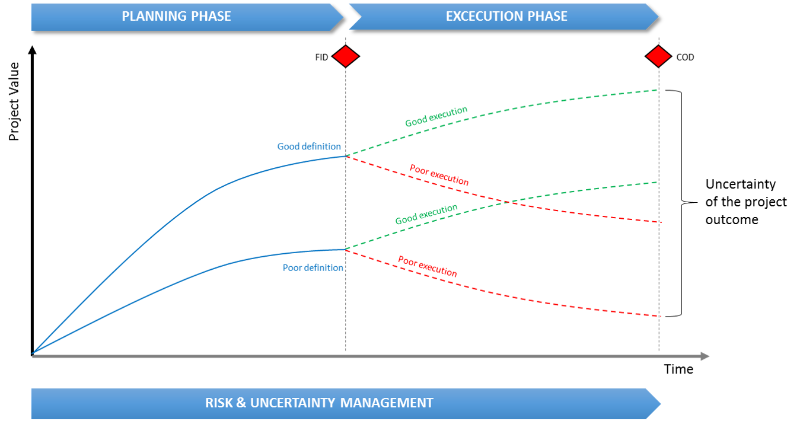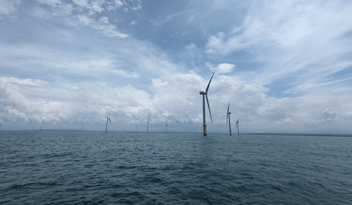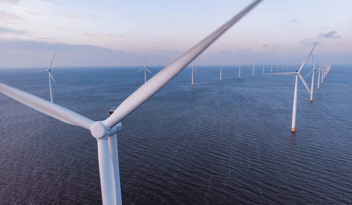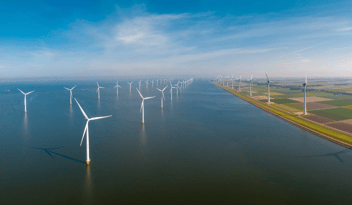
Risk and uncertainty management – how to increase project value
Applying prudent, state of the art risk and uncertainty management techniques easily pays for itself and can add significant value to a wind or solar project.
Poor risk management can easily increase project capital expenditures (CAPEX) by two to four percent plus. For a 400 MW offshore wind farm this can easily amount to EUR 20 – EUR 50 Million.
When you look a project’s expected outcome in terms of value it becomes apparent that this depends to a large degree on two key factors:
- The quality of the project definition (i.e. quality of the design and engineering, planning and risk profile of the schedule, quality of the contracts, etc.), which is mainly established during the planning phase.
- The quality of the implementation of the project (i.e. decisions made, execution of the contracts, quality control, claim management, etc.), during the execution phase.
Illustrated in this graph:
%20/Riskgraph1.png)
How to reduce project risks?
Different techniques can be used to evaluate the impact of contractual options, risk mitigations measures or strategic decisions on the projects risk profile, allowing for better-informed decision making.
Furthermore, state of the art approaches can provide stakeholders with valuable insight into potential outcomes at Commercial Operations Date (COD) already when making the Final Investment Decision (FID). This allows decision makers to fully understand the projects risk profile. Essential for making educated and properly substantiated decisions.
Understanding CAPEX risks
Applying this concept to project capital expenditures (CAPEX), risk and uncertainty management is a key driver for the final project costs. Prudent risk and uncertainty management is also essential to the entire project lifecycle to get lower final CAPEX once the wind or solar project is ready for operation. Equally poor risk and uncertainty management will result in higher costs.
In other words, the sooner you start the more money you will save or earn.
How to quantify the value?
Quantitative risk assessment (QRA) is considered the best practice approach to quantify, analyze and show the cost exposure associated with the project’s risk profile for large capital-intensive infrastructure projects.
Expected, but also pessimistic and optimistic outcomes can be estimated using QRA. What exact values represent pessimistic or optimistic outcome depend on the risk appetite of the project shareholders.
But experience shows, that poor risk and uncertainty management will increase the likelihood of ending up in a pessimistic case, while prudent risk and uncertainty management will increase the likelihood of ending up in an optimistic case.
Most commonly used confidence levels are:
P90 QRA results or P80 QRA results for a pessimistic case. P10 QRA results or P20 QRA results if you have an optimistic approach. The following graphs show a P10 / P90 scenario as an example.
%20/Riskgraph2.png)



